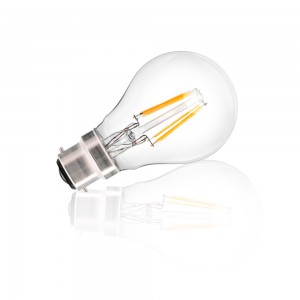Get Into Shape With Energy-Saving LED Bulbs
Posted by Amit Soni on 24th Jul 2014
 There are several important things to consider when you’re purchasing a light bulb.
There are several important things to consider when you’re purchasing a light bulb.
You’ll need to think about the type of fitting or ‘cap’ you need, the colour, the number of watts and how many lumens you require. But what about the physical shape of the bulb? Isn't it important as well?
Light bulbs come in all manner of shapes and sizes, and LEDs are no exception. Choosing an LED bulb that’s correctly-shaped is very important, and will make all the difference when it comes to illuminating your home or commercial premises.
The following briefly outlines some of the most common LED light bulb shapes and their applications, to give you some idea of the type bulb you should be looking for.
General Purpose Bulbs
Also referred to as globes, these LEDs closely resemble the traditional incandescent bulbs they’re designed to replace. Their design allows for maximum light distribution, and makes them ideal for lighting applications where a large spread of light is desirable.
You’ll most often find them used in ceiling pendants, but they work equally well in table lamps and up-lighters.
A19 is the standard size for this bulb, but there are also A15, A21 and A23 versions.
The larger the number, the larger the size, although the fitting always stays the same, whether it is B22 or E27, which means they should always work in your existing fittings.
Candelabra Bulbs
"C" series bulbs, such as the Dimmable E27 3W Omni-LED Clear Candle, are designed to resemble a candle and are mainly used for decorative lighting like chandeliers and wall sconces.
Some "C" bulbs feature a twisted or moulded appearance, to give them more aesthetic appeal which is even more important where the bulbs are exposed or on show.
Reflector Bulbs
LED bulbs such as the E14 R50 4.5W LED Reflector are designated "R" or "PAR". They’re typically used where a directional light source with a wide beam is required.
Traditional incandescent bulbs use glass that’s coated with a reflective material to focus the light in a single particular direction. However, as LEDs are naturally directional, no reflectors are required so their beam angle is naturally used to its maximum potential.
This type of bulb is ideal for use in downlighters, and for any application in which you require more control over your lighting, such as highlighting art work.
Making The Right Choice
With LEDs, a bulb is not just a bulb; all the letters and numbers mean something.
And don’t forget that all-important fitting or “cap” size, because there are lots to choose from.
Whichever LED light bulb you choose as a replacement for your existing incandescent or fluorescent model, you can rest assured that it will be a vast improvement in every department.
LEDs require 90% less electricity than both types of traditional light source to produce exactly the same number of lumens. This means that when you switch to LED light, you’ll begin to notice a reduction in your energy bills in a very short time.
You’ll also notice that you don’t have to replace your light bulbs quite as often. Indeed, LED bulbs with their 50,000 hour life-expectancy will outlast both CFLs and Incandescents many times over.
Should you have any questions about any aspect of LED lighting, please don’t hesitate to give us a call on 0116 321 4120.
You can also send an e-mail enquiry to cs@wled.co.uk and post a question on our Facebook or Twitter pages.





